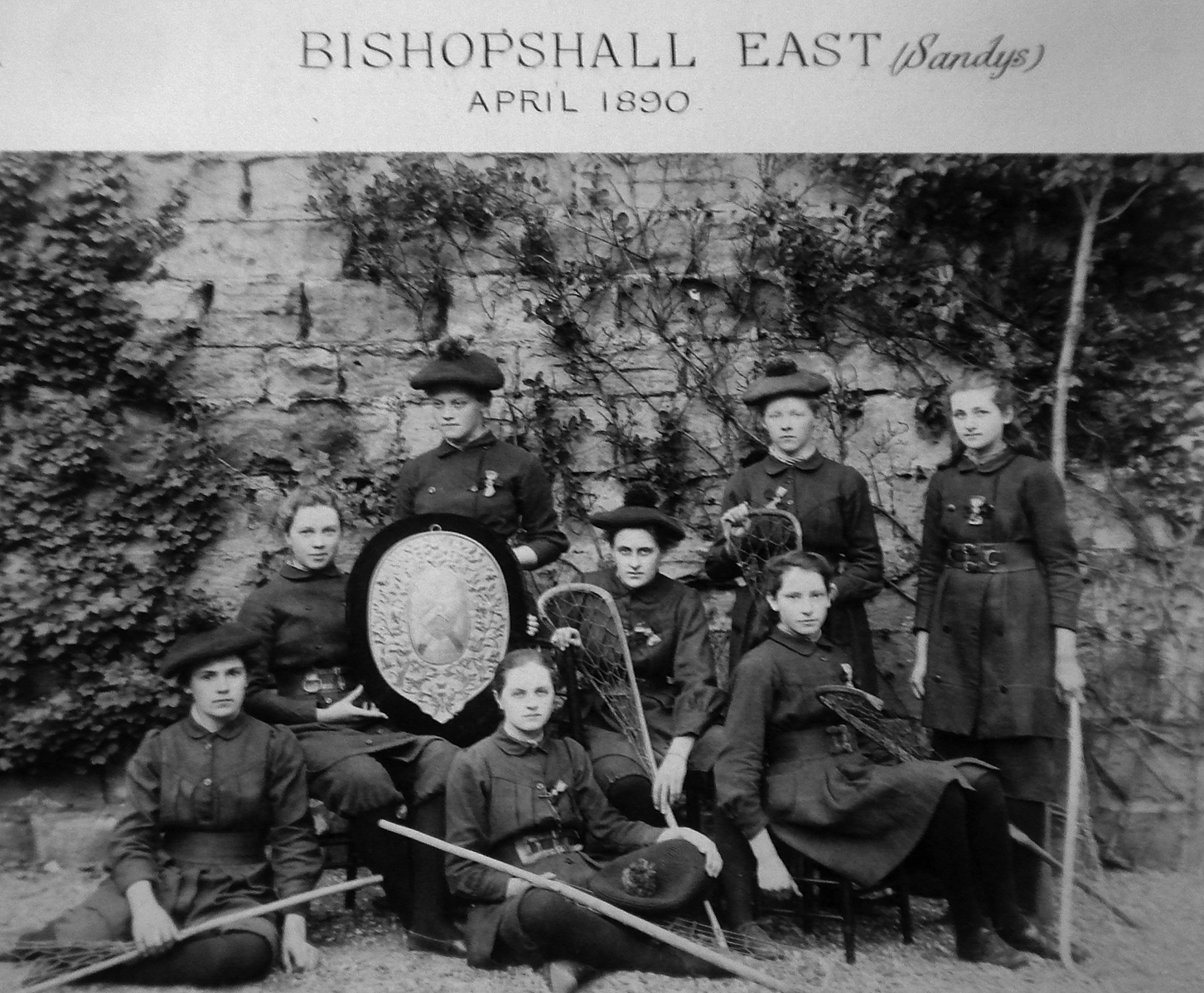“Lacrosse, as girls play it, is an orderly pastime that has little in common with the men’s tribal warfare version except the long-handled racket or crosse that gives the sport its name, Its true that the object in both the men’s and women’s lacrosse is to send a ball through a goal by means of the racket, but whereas men resort to brute strength the women depend solely on skill.”
– Rosabelle Sinclair
Two weeks ago I wrote about lacrosse as a fundamentally American game, and in many ways that’s true. But modern women’s lacrosse actually started in Scotland in 1890, after the headmistress of St. Leonard’s School in St. Andrews watched an exhibition game played in Canada between the Canghuwaya Indians and the Montreal Club. A report in the student newspaper pricelessly recounts the start of the game, which seems haphazard at best:
“After our crosses having undergone a severe inspection i.e. our referee holding them up one by one and squinting with one eye to see if that which ought to be plane surface was not a curved one. Our referee said it was time to begin, but, owing to the absence of the ball it was rather difficult for the order to be carried out. However, the ball was duly found & after ’123 Play’ had been called, a vigorous game began.”
The game lasted an hour, with a ten minute half time. There were eight players on each team. By 1913, there were twelve, just like we have today.
The account brings up so many questions for me. Who was the referee, for instance? As a coach in Montana, I can attest to the fact that we were constantly struggling to find qualified referees because the game is relatively new. Obviously, it was much newer in 1890! The story also makes me wonder whether the school team, a girls team, played by the men’s rules drafted by Dr. William George Beers in 1865. Beers was a dentist and a founding member of the Montreal Lacrosse Club. Judging from their sticks alone, its clear that the men’s and women’s games had much more in common in the late 1890s than they do today!
But I don’t want to bore you. Let’s jump forward to 1926, when Ms. Rosabelle Sinclair became a PE teacher at the Bryn Mawr School in Baltimore, Maryland. Born in 1890 in the Ukraine, she played lacrosse at St. Leonard’s School in Scotland, graduating in 1910. She moved to England for a spell, and then off to America! She introduced her students, all girls, to the sport, making Bryn Mawr the birthplace of US women’s lacrosse, and making Rosabelle “the Great Dame of Lacrosse.” I assume she was kind of obsessed with the sport (and I assume if you’re reading this, you understand why!). Fittingly, she was the first woman inducted into the Lacrosse Hall of Fame in 1992.
Have you made a Tenacity connection yet? No? Keep reading….
Rosabelle also served as the Bryn Mawr athletic director for 26 years, drawing yet another parallel with one of our very own Bryn Mawr greats – Tenacity National Director Wendy Kridel. Not only did Wendy coach at Bryn Mawr for 18 years, she was also athletic director for much of that time. Triply cool, Wendy coached at the U19 World Cup in Edinburgh, Scotland, strengthening the historic link there. At the time (2015, that is), she said, “I’ve always felt very strongly that connection to the origin of women’s lacrosse, coming to the school and me sort of feeling like the keeper of the game.”
And then, to tangle up our storylines even further, our own Theresa Sherry was the assistant general manager for the U19 team, and of course a graduate of Bryn Mawr. Very cool connections!
I guess you could say that Tenacity has a uniquely strong link to the cradle of modern women’s lacrosse and that we’re uniquely poised to grow the game. We’re kind of the great-great-great-grandchildren, if you will.
That’s a mantel to carry with pride, and something to remember when step on the field—representing Tenacity and, through a kind of trickle down process, Rosabelle Sinclair herself!
Written By: Courtney Bird
July 21st 2016

